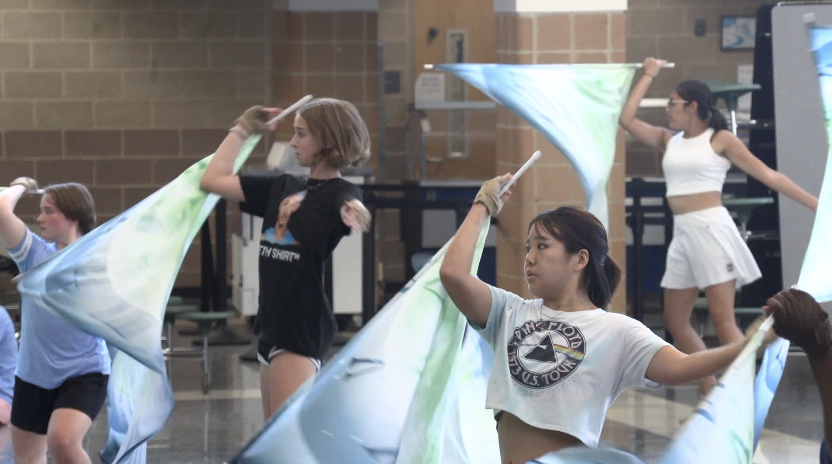How far down does one have to go on the list of highest grossing movies of 2024 before they find an original Hollywood film? 29 movies down on the list, John Krasinski’s film “IF” stands as the only original movie at $190 million. The budget for that movie was $110 million, meaning that the movie actually lost close to $15 million. This is a common trend; original movies tend to lose money.
This is the state of original movies in Hollywood. The highest grossing movies of every year are the ones built off of existing intellectual properties (IPs). When a movie gets made, its characters and story become part of its IP. When studios make a new movie with the same characters or within the same universe, it is considered unoriginal because it is based off of a pre-existing IP. When studios put money into original movies, they tend to fail; however, when original movies get remade or a sequel is made, they tend to do well in box offices.
An explanation to this phenomenon can be found in people’s reactions to new movie releases. A lot of times, when a new movie comes out, people will use its seemingly poor quality and low critic ratings to justify its box office failure. When Bong Joon-Ho’s film “Mickey 17” released, people used its comparatively low Rotten Tomatoes score to justify why people weren’t rushing out to see it. However, this doesn’t seem to be the case. High grossing films based off of past films like “Moana 2” and “Despicable Me 4” also have low critics scores on Rotten Tomatoes, although they have relatively high audience scores.
Despite garnering unfavorable critic’s scores, the audience scores tell a different story. For example, “Five Nights at Freddy’s” is a 2023 movie based on the horror franchise video game of the same name. The movie stands at a 32% critics score and an 86% audience rating on Rotten Tomatoes.
“Five Nights at Freddy’s” is a good example of high audience scores with low critics scores because the understanding of the movie is directly tied to the amount of time one spends engrossed in its lore. The story of the games is notorious for being difficult to understand, to the extent that YouTuber Matthew Patrick of “The Game Theorists,” whose presence in the game’s community was strong enough to earn him a cameo in the movie, has made close to 75 videos dissecting the story of the games. This complexity creates a tight-knit fandom of people who understand the games that is difficult to break into.
That’s what leads to the high audience scores on Rotten Tomatoes. The people who review these movies as an audience are people who already appreciate the thing these movies are based on. The fact that there is a Five Nights at Freddy’s movie is enough for people to give it a high score. This seems to also be the case with “The Super Mario Bros. Movie,” “Deadpool & Wolverine” and many other high-grossing films based off of already existing stories.
The other reason that these unoriginal films seem to do well is that they tend to be entertainment geared towards children. When a ticket is sold for a children’s movie, it essentially means that two tickets are sold; one for the child and one for an accompanying parent. This leads to studios getting more money for their children’s films, allowing them to succeed even if they are original.
This is what happened with the hugely successful films “Moana” and “Inside Out.” The first movies release and get children hooked on the characters, which allows the sequels to do well regardless of their quality. In fact, it’s the quality of the first film that allows the sequel to be bad and still do well.
Selling tickets to children comes with another complexity. The parent tends to have the final say on whether any tickets are bought. This means that there has to be some sort of hook for a parent to take their children to the theater. For many, the quality of the first film serves as that hook, convincing them to see the sequel.
Understanding why unoriginal films tend to do well, why don’t original films perform the same? The answer is that audiences are too apprehensive to test out a new IP. The outrage over unoriginal Hollywood films tends to come around when a new remake or sequel is announced that audiences think looks bad. The most glaring recent example is Disney’s live-action “Snow White,” a remake of the 1937 film of the same name. Audiences had trouble with this movie, finding issues with the lead actresses, Gal Gadot and Rachel Zegler, as well as the portrayal of the seven dwarves in a live-action style.
During the release window for the movie, viewers claimed that the problem with it was that Disney had yet again attempted to make a remake of an existing film instead of an entirely new one. The hypocrisy of the call of original films was highlighted by the failure of “Mickey 17,” which was released only two weeks prior.
This hypocrisy was especially evident in 2024, when Pixar quietly announced that they would be focusing on existing IPs over original stories in the build-up to the release of “Inside Out 2.” The movie received little to no pushback over the fact that it was intended to usher in a new era of sequel-dominated Pixar movies, with 2025’s “Elio” seeming to be the last hope for Pixar’s original films.
The problem for audiences does not seem to be the unoriginality of movies— the fact that successful movies tend to be unoriginal in Hollywood is used as an excuse to refrain from applying any critical thought to the unpopular movies that come out. When unoriginal movies fail at the box office, audiences typically lean on the fact that the movie is unoriginal to justify its failure.
However, this notion isn’t consistent with the feedback seen by other unoriginal movies. The 2012 remake “Snow White and the Huntsman” grossed nearly double what the 2025 “Snow White” remake did. People aren’t turned off by the idea of a Hollywood remake, they just target specific movies to complain about the state of Hollywood.
It’s also important to keep in mind that many of the films considered classics today were not box office hits when they came out. David Fincher’s “Fight Club,” now one of the most popular movies of all time, famously grossed only $100 million, losing about $10 million on a budget of $60 million. Box office grosses don’t always translate to the popularity or quality of a movie.
There are two more ways that original films spread: award shows and review publications. Award shows, such as the Oscars, will ideally highlight the best films of the year, which include a higher share of original movies that gross less well. Original film “Anora” took home five Oscars at the most recent ceremony, despite only grossing $60 million.
Review publications, on the other hand, tend to be more holistic in their coverage of new releases. This includes potentially good original movies that don’t get awards attention. This allows these movies to get widespread recognition, even without an impressive theatrical run or awards campaign.
There is still hope for original movies. So long as artists remain in the industry, the industry will continue to produce art.














































































